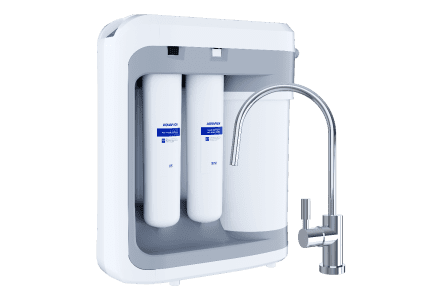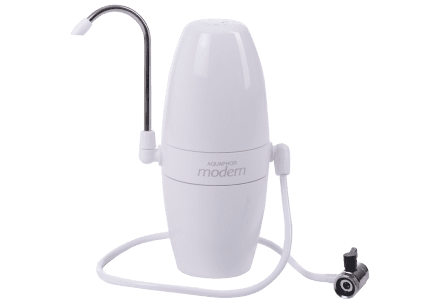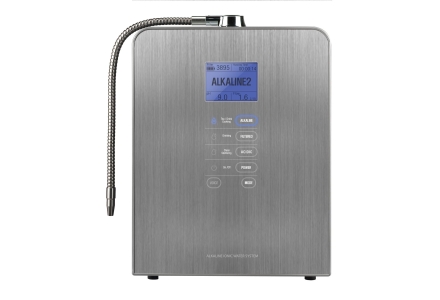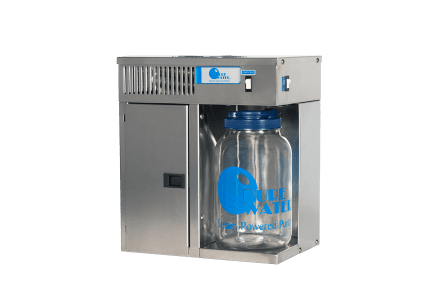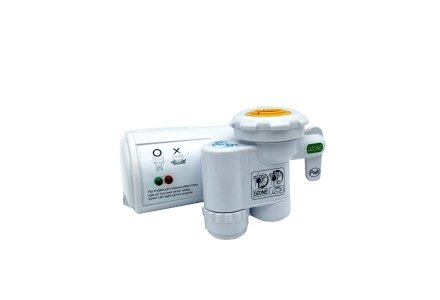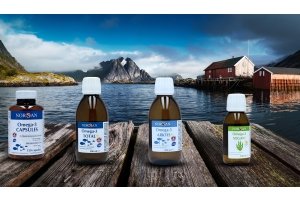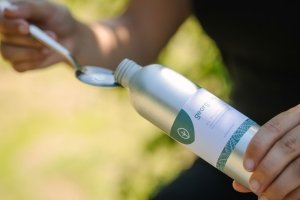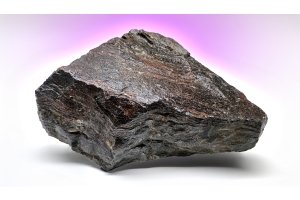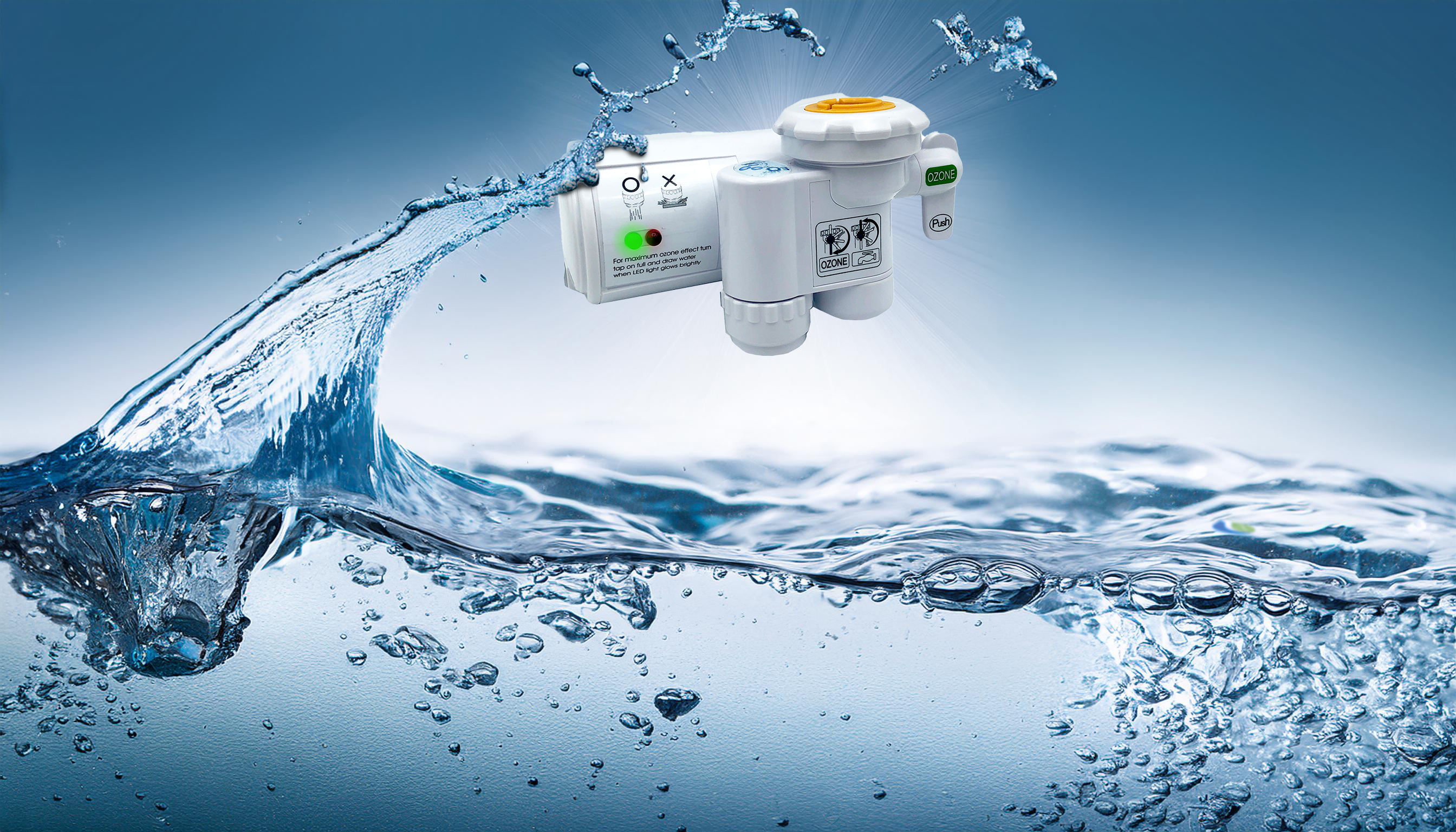
In a world where air, water and food quality are increasingly important, ozone generators are emerging as powerful and versatile solutions. These innovative devices use ozone, a natural gas with strong oxidative properties, to support a wide range of applications. In this blog, we explore the modern applications of ozone generators in various sectors, including healthcare, industrial processes and also home use. Explore with us the many benefits and possibilities ozone generators have to offer, including options for home use, for which Meditech Europe offers various products.
What is Ozone
Ozone is a molecule composed of three oxygen atoms, with the chemical formula O3. It differs from the oxygen gas (O2) we breathe, which consists of two oxygen atoms. Ozone occurs naturally in the atmosphere (the ozone layer) and plays an important role in protecting the Earth from harmful ultraviolet (UV) radiation from the sun. The ozone layer in the atmosphere is formed because oxygen molecules split under the influence of ultraviolet radiation.
The extra oxygen atom makes ozone a highly reactive compound, so it tends to react with organic or inorganic compounds. This process can lead to the breakdown of contaminants, bacteria, viruses and fungi. In addition, ozone is unstable and tends to revert to oxygen (O2) over time, so it does not leave long-lasting residues.
There are ozone generators, modern devices that artificially generate ozone, which can have several practical applications.
Air Purification
Ozone is often used to remove unpleasant odors, bacteria, fungi and viruses in the air. The idea is that ozone, due to its strong oxidative properties, can break down organic substances such as odors and microorganisms, thus cleaning the air.
Ozone generators in air purifiers are believed to have the following benefits:
Neutralization of odors: Ozone is touted for its ability to neutralize strong, unpleasant odors, such as smoke, mold, and cooking odors. This happens because ozone molecules react with and break down the molecules that cause these odors.
Killing microorganisms: Ozone can kill bacteria, viruses, fungi and other pathogens by damaging their cell walls. This is why some air purifiers with ozone generators are promoted as tools to disinfect the air and reduce germs.
Breaking down certain chemicals: Ozone can break down some volatile organic compounds (VOCs), which can help reduce the concentrations of certain pollutants in the air.
However, it should be mentioned here that the concentration of ozone released into the air by the air purifier should not become too high because ozone can be irritating to the airways, eyes, nose and throat.
Water Treatment
Ozone is used to disinfect drinking water by killing bacteria, viruses, parasites and other pathogens. It also helps remove taste and odor causing substances, as well as oxidizing iron, manganese and other dissolved organic and inorganic substances.
In wastewater treatment, ozone is used to break down contaminants and destroy pathogens. It can remove organic matter, dyes and odors without leaving harmful byproducts, as chlorine disinfection can.
Ozone is used in pools and spas to disinfect the water and keep it free of bacteria and viruses, while reducing the amount of chlorine needed for maintenance. This results in less chlorine smell and less irritation to the skin and eyes.
Food Safety and Storage
Ozone can be a valuable tool in the food industry because of its powerful disinfectant properties and ability to extend the shelf life of products.
Food Safety: Ozone is often used as a food disinfectant. It can effectively kill bacteria, fungi and viruses, reducing the risk of food poisoning. It is especially useful for disinfecting surfaces and equipment in food processing. It helps remove contaminants and pathogens, contributing to overall food safety.
Using ozone can extend the shelf life and freshness of certain foods. It can help reduce mold growth and slow down oxidation processes that cause spoilage.
Storage: Ozone can be used to treat the air in storage areas. It helps reduce unwanted odors and kill fungi and bacteria that may develop in the storage environment. In some cases, ozone is used in conjunction with packaging materials to reduce microbial load and maintain product freshness.
Industrial applications
Ozone has several industrial applications because of its strong oxidative properties. Here are some important applications:
Disinfection: Ozone is widely used to disinfect drinking water and wastewater. It kills bacteria, viruses and other pathogens more effectively than chlorine.
Oxidizing agent in the chemical industry: Ozone is used as an oxidizing agent in various chemical reactions, such as the production of chemicals and pharmaceuticals. And it plays a role in the synthesis of certain organic compounds and polymers.
Bleaching and disinfection: Ozone is used for bleaching textiles, which is more environmentally friendly than traditional methods that require chemicals. It can also be used to disinfect textiles and remove odors.
Healthcare
Ozone is used in a variety of ways in healthcare, mainly because of its antimicrobial properties and oxidative effects. Here are some important applications:
Ozone therapy: Ozone therapy is sometimes used to treat various conditions, such as arthritis, chronic pain, and infections. It can help improve blood flow and boost the immune system. Ozone can be administered in a variety of ways, including intravenous injections, insufflation (blowing into body cavities), and as part of ozone-rich oil for topical applications.
Disinfection and sterilization: Ozone is used to disinfect medical instruments and equipment. It can effectively kill bacteria, viruses and fungi, reducing the risk of infections in healthcare facilities. Ozone can be used to disinfect the air and water in hospitals and clinics, contributing to a safe environment for patients and staff.
Wound treatment: Ozone can be used in the treatment of wounds, especially chronic wounds and burns. It promotes healing by improving blood circulation and fighting infection. Ozone can be dissolved in oils and used to treat skin infections and other dermatological conditions.
Dentistry: Ozone can be used in alternative dentistry to disinfect the oral cavity and treat tooth decay. It can help reduce bacteria and promote gum healing.
Home use
Ozone generators for home use can be used for a variety of purposes:
Air Purification and Odor Removal
This can be useful after painting a room, after removing mold, or after fire or smoke damage. Some people use ozone generators in cars to remove odor or in basements to combat moisture-related odors. Because ozone can be harmful to health in high concentrations, these ozone generators should be used only in empty rooms, with no people or pets present. After use, the room should be well ventilated before being put back into use.
Adding Ozone to Tap Water
There are ozone water generators that enrich tap water with ozone. This is one way to improve water quality. Meditech Europe offers a range of water treatment products. This ozone water has a number of uses including:
Ensuring good hygiene: Think of washing your hands with ozone water, soap is then no longer necessary. But using ozone water for the skin can also contribute to thorough skin care.
Disinfecting food: Washing fish, meat and leafy vegetables with ozone water disinfects these foods. This keeps the products fresh even longer, but in addition, it cleans the fruits and vegetables of pesticide residues and toxic chemicals.
Disinfect and sterilize drinking water: Ozone not only kills bacteria, viruses, fungi and other microorganisms, but also, for example, chloride residues that cause unpleasant odors and tastes, making tap water undrinkable. Coffee or tea prepared with ozonated water has a nice taste. If desired, you can let ozonated water stand for half an hour before drinking it to allow the characteristic ozone smell to disappear.
Oxidation of Pollutants: Ozone can help break down chemicals and other contaminants in water, such as pesticides, hormones, and other organic substances. This process reduces the presence of pollutants in drinking water.
Environmental Protection
Ozone plays a complex role in environmental protection, both as a protective layer in the stratosphere, but it is also a potentially harmful substance in the troposphere.
The ozone layer is located in the stratosphere, about 15 to 35 kilometers above the Earth's surface. This layer contains a relatively high concentration of ozone (O₃) and plays a crucial role in protecting the Earth from harmful ultraviolet (UV) radiation from the sun.
Tropospheric ozone, or low-lying ozone, can form in the troposphere. This is ozone that is close to the Earth's surface. Unlike stratospheric ozone, tropospheric ozone is a major air pollutant and a component of smog. It often occurs in urban areas where traffic emissions and industrial emissions are high. It is formed by chemical reactions between nitrogen oxides and volatile organic compounds under the influence of sunlight.
Conclusion
Modern applications of ozone generators highlight their versatility and effectiveness in various sectors, from air and water purification to food safety, industrial processes and healthcare. These devices utilize the powerful oxidative properties of ozone to neutralize contaminants, destroy pathogens and break down harmful substances.
Ozone generators can also be used for home use, first in the area of air purification and odor removal. Here it is important to take care to avoid possible health risks. Second, it is possible to add ozone to tap water at home with an ozone water generator. This offers hygiene, food disinfection and water cleaning benefits.
With proper application, ozone generators can contribute to a cleaner, safer and healthier living environment. Meditech Europe offers several ozone products for home use. For more information about ozone and the applications of ozone generators, please feel free to contact us.
